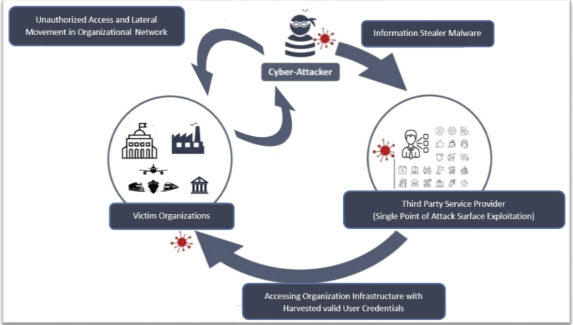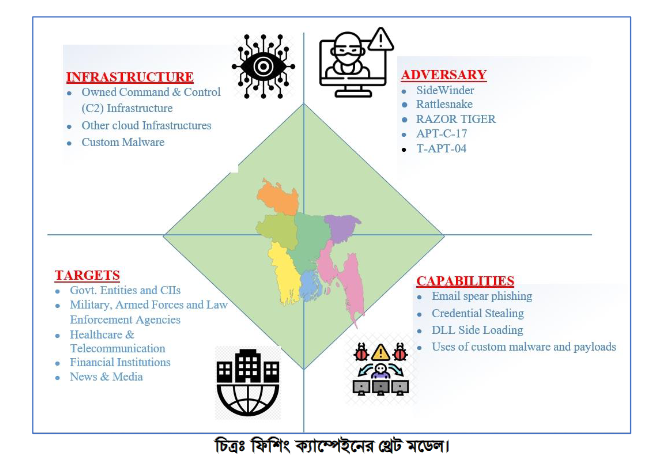Multiple Vulnerabilities in Google Chrome Could Allow for Arbitrary Code Execution
by CIRT Team
DESCRIPTION
Multiple vulnerabilities have been discovered in Google Chrome, the most severe of which could allow for arbitrary code execution. Google Chrome is a web browser used to access the Internet. Successful exploitation of the most severe of these vulnerabilities could allow an attacker to execute arbitrary code in the context of the browser. Depending on the privileges associated with the application, an attacker could view, change, or delete data. If this application has been configured to have fewer user rights on the system, exploitation of the most severe of these vulnerabilities could have less impact than if it was configured with administrative rights.
IMPACT
Multiple vulnerabilities have been discovered in Google Chrome, the most severe of which could allow for arbitrary code execution. These vulnerabilities can be exploited if a user visits, or is redirected to, a specially crafted web page. Details of the vulnerabilities are as follows:
- A use-after-free vulnerability. Specifically, this issue exists in the ‘payments’ component. (CVE-2020-15967)
- A use-after-free vulnerability. Specifically, this issue exists in the ‘Blink’ component. (CVE-2020-15968)
- A use-after-free vulnerability. Specifically, this issue exists in the ‘WebRTC’ component. (CVE-2020-15969)
- A use-after-free vulnerability. Specifically, this issue exists in the ‘NFC’ component. (CVE-2020-15970)
- A use-after-free vulnerability. Specifically, this issue exists in the ‘printing’ component. (CVE-2020-15971)
- A use-after-free vulnerability. Specifically, this issue exists in the ‘audio’ component. (CVE-2020-15972)
- A use-after-free vulnerability. Specifically, this issue exists in the ‘autofill’ component. (CVE-2020-15990)
- A use-after-free vulnerability. Specifically, this issue exists in the ‘password manager’ component. (CVE-2020-15991)
- A security-bypass vulnerability that occurs due to insufficient policy enforcement. Specifically, this issue exists in the ‘extensions’. (CVE-2020-15973)
- An integer-overflow vulnerability. Specifically, this issue exists in the ‘Blink’ component. (CVE-2020-15974)
- An integer-overflow vulnerability. Specifically, this issue exists in the ‘SwiftShader’ component. (CVE-2020-15975)
- A use-after-free vulnerability. Specifically, this issue exists in the ‘WebXR’ component. (CVE-2020-15976)
- A security vulnerability. Specifically, this issue occurs due to certain inappropriate implementation in networking. (CVE-2020-6557)
- A security vulnerability because it fails to properly validate data. Specifically, this issue exists in the ‘dialogs’ component. (CVE-2020-15977)
- A security vulnerability because it fails to properly validate data. Specifically, this issue exists in the ‘navigation’ component. (CVE-2020-15978)
- A security vulnerability. Specifically, this issue occurs due to certain inappropriate implementation in the ‘V8’ component. (CVE-2020-15979)
- A security-bypass vulnerability that occurs due to insufficient policy enforcement. Specifically, this issue exists in the ‘Intents’ component. (CVE-2020-15980)
- A security vulnerability that occurs due to an out-of-bounds read error. Specifically, this issue exists in the ‘audio’ component. (CVE-2020-15981)
- An information-disclosure vulnerability that occurs due to a side-channel information-leakage condition. Specifically, this issue exists in the ‘cache’ component. (CVE-2020-15982)
- A security vulnerability because it fails to properly validate data. Specifically, this issue exists in the ‘webUI’ component. (CVE-2020-15983)
- A security-bypass vulnerability that occurs due to insufficient policy enforcement. Specifically, this issue exists in the ‘Omnibox’ component. (CVE-2020-15984)
- A security vulnerability. Specifically, this issue occurs due to certain inappropriate implementation in the ‘Blink’ component. (CVE-2020-15985)
- An integer-overflow vulnerability. Specifically, this issue exists in the ‘media’ component. (CVE-2020-15986)
- A use-after-free vulnerability. Specifically, this issue exists in the ‘WebRTC’ component. (CVE-2020-15987)
- A security-bypass vulnerability that occurs due to insufficient policy enforcement. Specifically, this issue exists in the ‘networking’ component. (CVE-2020-15992)
- A security-bypass vulnerability that occurs due to insufficient policy enforcement. Specifically, this issue exists in the ‘downloads’ component. (CVE-2020-15988)
- An unspecified security vulnerability that exists in the ‘PDFium’ component. (CVE-2020-15989)
Successful exploitation of the most severe of these vulnerabilities could allow an attacker to execute arbitrary code in the context of the browser. Depending on the privileges associated with the application, an attacker could view, change, or delete data. If this application has been configured to have fewer user rights on the system, exploitation of the most severe of these vulnerabilities could have less impact than if it was configured with administrative rights.
SYSTEM AFFECTED
- Google Chrome versions prior to 86.0.4240.75
RECOMMENDATIONS
Following actions are recommended to be taken:
- Apply the stable channel update provided by Google to vulnerable systems immediately after appropriate testing.
- Run all software as a non-privileged user (one without administrative privileges) to diminish the effects of a successful attack.
- Remind users not to visit un-trusted websites or follow links provided by unknown or un-trusted sources.
- Inform and educate users regarding the threats posed by hypertext links contained in emails or attachments especially from un-trusted sources.
- Apply the Principle of Least Privilege to all systems and services.
REFERENCES
https://chromereleases.googleblog.com/2020/10/stable-channel-update-for-desktop.html
Recommended Posts

Cyber Threat Alert: Surge in Attacks via Compromised Third-Party Service Providers
08 Feb 2024 - Articles, English articles, Security Advisories & Alerts












